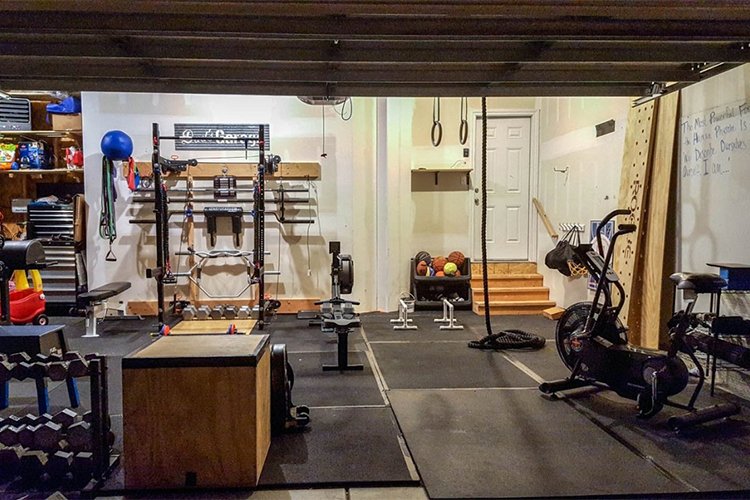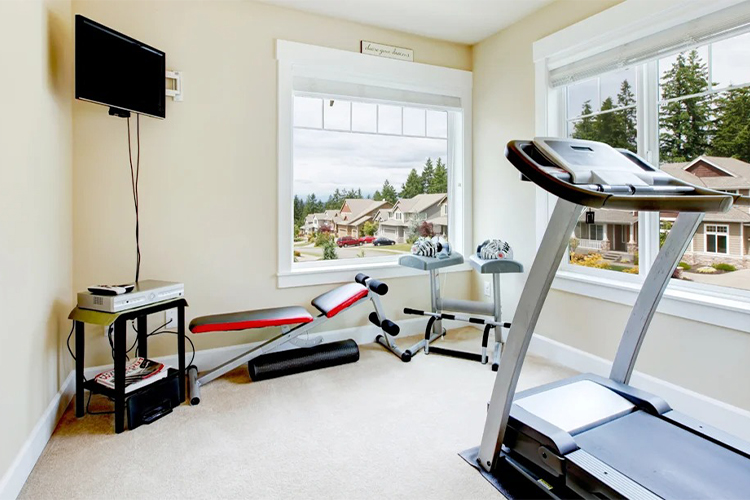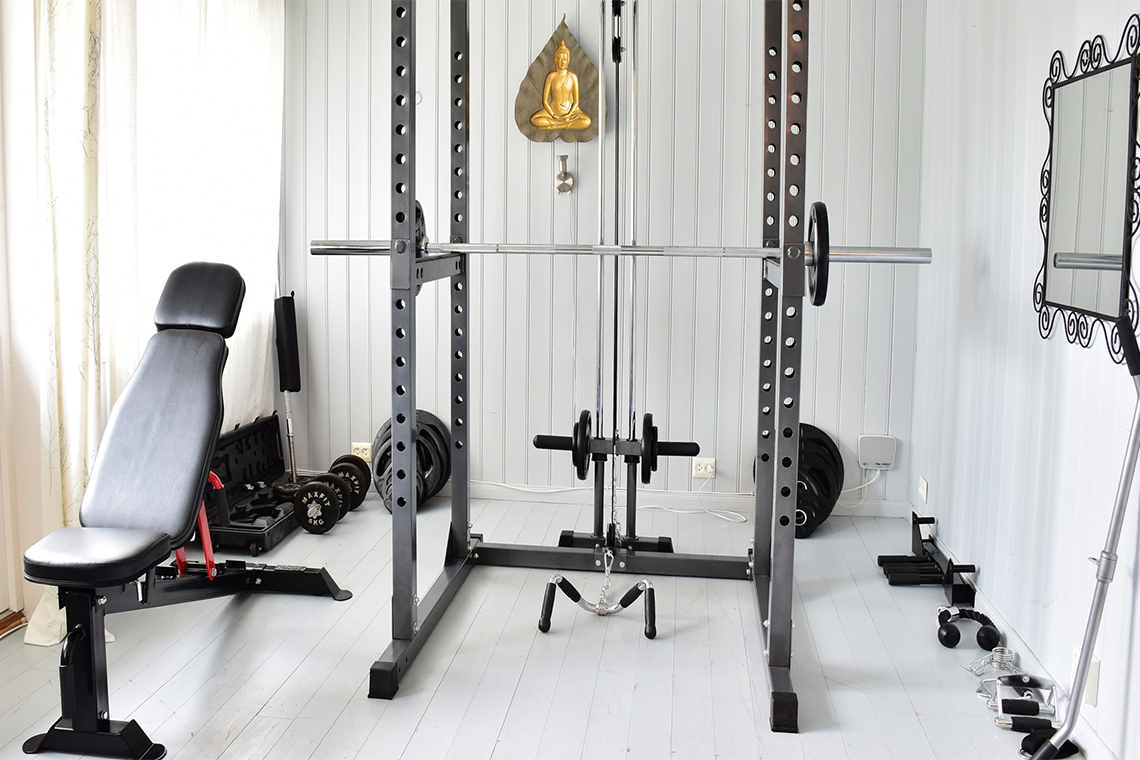In today’s busy world, it can be tough to find time to hit the gym regularly. However, it is essential to prioritize our health and fitness, as it has numerous benefits, including increased energy, improved mental health, and reduced risk of chronic diseases. One solution is to create your own home gym, which is a convenient and cost-effective way to stay fit. Here are some tips on how to create your own home gym.
Determine Your Space and Budget
The first step in creating a home gym is to determine the available space and budget. Consider the amount of space you have and what type of equipment you want to purchase. A spare bedroom or a basement can be ideal for a home gym. On the other hand, if space is limited, you can opt for equipment that is space-saving, such as resistance bands, adjustable dumbbells, or a jump rope.
Next, consider your budget. Creating a home gym can be costly, but it doesn’t have to be. You can start with basic equipment and gradually add more as your budget allows. Keep in mind that investing in quality equipment is worthwhile as it will last longer and provide a better workout experience.

Choose the Right Equipment
Choosing the right equipment is crucial to ensure a well-rounded workout. Consider the types of exercises you enjoy and what areas of the body you want to target. Some essential pieces of equipment to consider include a treadmill or elliptical machine for cardio, a set of dumbbells or kettlebells for strength training, and a stability ball for core exercises. Other equipment to consider include resistance bands, a jump rope, a pull-up bar, and a yoga mat.
Create a Comfortable and Motivating Environment
Creating a comfortable and motivating environment is crucial to make your home gym an enjoyable place to work out. Consider adding a sound system or a TV to play music or watch your favorite shows while working out. You can also add motivational posters, plants, or a bright-colored wall to enhance the ambiance.
Additionally, consider the lighting in your home gym. Natural light is ideal, but if that’s not an option, invest in bright, energy-efficient lighting that will help create an uplifting and energizing environment.
Schedule Your Workouts
One of the benefits of having a home gym is the flexibility to work out at any time. However, it’s still essential to schedule your workouts and stick to them to ensure consistency. Create a workout schedule that suits your lifestyle and commit to it.

Stay Accountable
Staying accountable is essential to ensure you remain motivated and consistent in your workouts. One way to do this is to find a workout partner, whether it’s a family member or a friend. Another way is to use fitness apps or wearables that track your progress and provide reminders to work out.
The right equipment for a gym depends on several factors, including the type of workouts you plan to do, your fitness goals, and your budget. However, there are some pieces of equipment that are considered essential for any gym, regardless of these factors. Here are some of the most important pieces of equipment for a gym:
Cardio Machines – Cardio machines are crucial for building endurance, burning calories, and improving overall cardiovascular health. The most common types of cardio machines include treadmills, stationary bikes, ellipticals, and rowing machines.
Free Weights – Free weights, such as dumbbells and barbells, are essential for building muscle strength and endurance. They are versatile and can be used for a wide range of exercises, including squats, deadlifts, bench presses, and bicep curls.
Weight Machines – Weight machines provide a safe and controlled way to work specific muscles and are ideal for beginners or those recovering from an injury. They come in a variety of types, including leg presses, chest presses, and lat pulldowns.
Resistance Bands – Resistance bands are a versatile and affordable piece of equipment that can be used for a variety of exercises, including stretching, strength training, and mobility work.
Stability Balls – Stability balls are great for improving core strength, balance, and flexibility. They can be used for a variety of exercises, including crunches, planks, and push-ups.
Yoga Mats – Yoga mats provide a comfortable and non-slip surface for yoga, Pilates, and other floor exercises. They also protect your joints and floors from damage.
Foam Rollers – Foam rollers are used for self-myofascial release, which can help reduce muscle soreness, improve flexibility, and prevent injuries.

Pull-Up Bar – Pull-up bars are excellent for building upper body strength and targeting the back, biceps, and shoulders. They can be mounted on a wall or used as a standalone piece of equipment.
Dip Station – A dip station is a piece of equipment that allows you to perform dips, which target the triceps, chest, and shoulders. It can also be used for other exercises, such as leg raises and knee raises.
Cable Machine – Cable machines provide a wide range of exercise options and can be used for strength training, functional training, and rehabilitation. They offer resistance in various planes of motion, which can improve overall fitness and athleticism.
Treadmill Desk – If you spend a lot of time working at a desk, a treadmill desk can be a great way to incorporate physical activity into your workday. It allows you to walk or jog at a slow pace while working on your computer or phone.
Elliptical Trainer – An elliptical trainer is a low-impact cardio machine that can be used for a full-body workout. It can help improve cardiovascular health, endurance, and muscle tone.
Stationary Bike – A stationary bike is a great option for those who prefer cycling indoors. It can provide a low-impact cardio workout, improve leg strength and endurance, and burn calories.
Punching Bag – A punching bag is a great way to relieve stress and improve overall fitness. It can help improve cardio endurance, strength, and coordination.
Smith Machine – A Smith machine is a weightlifting machine that consists of a barbell fixed to vertical guides. It is a great piece of equipment for performing exercises such as squats, bench press, and shoulder press.
Incline Bench – An incline bench is a weight bench that is designed with an adjustable backrest, which allows you to change the angle of your upper body during exercises such as bench press, shoulder press, and flyes.
Power Rack – A power rack, also known as a squat cage, is a versatile piece of equipment that allows you to perform a variety of exercises safely. It is great for performing heavy lifts such as squats, bench press, and shoulder press.
Jump Rope – A jump rope is an inexpensive and portable piece of equipment that is great for improving cardiovascular health, coordination, and endurance.
Agility Ladder – An agility ladder is a ladder-like piece of equipment that is used for footwork drills and agility training. It can help improve speed, coordination, and balance.
Pull-up Bands – Pull-up bands are stretchable bands that can be used to assist with pull-ups, chin-ups, and dips. They are great for beginners or those who struggle with bodyweight exercises.
When creating a home gym, it’s important to consider not only the equipment you need but also the space you have available. Make sure you have enough room to safely and comfortably use your equipment, and consider storage solutions to keep your gym space organized and tidy. Lastly, remember that a gym is only as effective as the workouts you perform in it – be sure to create a workout plan that aligns with your fitness goals and stay consistent with your routine.












